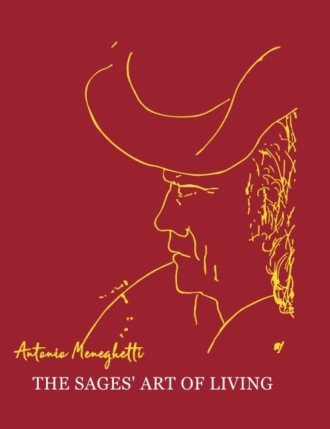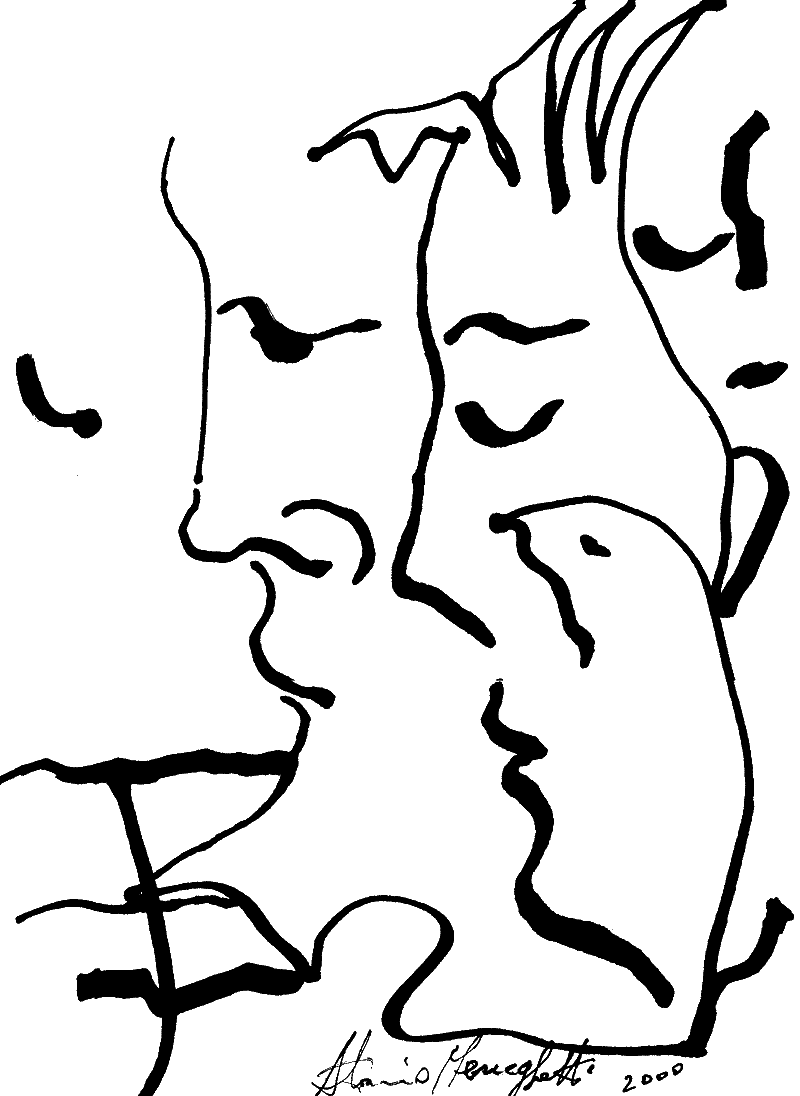
Антонио Менегетти
The sages’ art of living
© Meneghetti А. L’arte di vivere dei saggi. Psicologica Ed., 1992, 1999.
© Antonio Meneghetti Scientific Foundation, 2014–2021 (http://meneghetti.ru).
The sage put his hand to his chest and withdrew a handful of objects which he threw to those present. Some were struck and suffered; they didn’t gather the objects, but rather followed their own shadows and remained in ignorance. Others gathered the objects and placed them between the heart and the mind. These became the light and continued the creation…
Antonio Meneghetti
Introduction
The history of a human thought does not know other such book about the highest esthetics.
After having followed many routes, from time to time considering absolute the one I had chosen, I reached the conclusion that each one forms an important part of the truth. Even today, when I meet people confirmed in their beliefs – some that are exemplary and others that are questionable – I have great tolerance, which allows me to understand people to be continuously beginning new paths that represent the many modes of life.
I don’t like to give advice to the so-called adults concerning the truth of some things, partly because they are already spoilt, partly because they are not able to renounce their historical identity, and partly because they are looking to have rather than to be.
However, when I think of young people (those who are fourteen to twenty-one years of age) my heart opens and my spontaneous desire to share knowledge manifests in a youthful way.
I once found that one of my daughters was crying. She told her mother later that she was suffering because she was not able to direct her life in a meaningful way. At first, I said nothing to my daughter. I said to her mother that it was a rather acute crisis, one of tension and anxiety of the metaphysical, something that is typical for a healthy and intelligent adolescent.
Most people, if not all, carry inside themselves a tomb that conceals the remains of their assassinated metaphysical potential. In essence, almost everyone reduces their existence to a biological cycle because they have not realized the ontic attraction of a metaphysical horizon (beyond the existence). The assassination of this call is systematically paid for with anguish.
I have written this book to reinforce that ontic call, to recognize it and to live it. So instead of living to die, life becomes living to be. Consequently anxiety, even when you are aware of it, is not experienced.
Chapter One
Three styles of life

1.1. The difference between living, mastery of living, and art of living
The verb to live (in Italian “vivere”) means running like a force within a force. From the Latin vis сomes force. Vita (life) comes from vis and from the Greek roots of the verb τιυηµι which means to post, give place or materialize; vita therefore means the place or the situation of living. The term “living” (“vivere”) is formed by the identification of a force within a general force. Both the forces, the individual one and the general one, are moving like a current. The ending “-ere” (as with all endings of the Italian verbs (-are, – ere, – ire)) comes from the Latin verb ruere, which means to run, to roll, to exit from, to precipitate, to rotate.
In fact, living signifies an active participation together with any other living being. The tree lives, the bird lives, and the man lives. Living being is used to describe anything that demonstrates constant autonomous self-movement necessary to accomplish all the functions that specify and characterize the individual as being alive. To live is just a natural participation wherein the species is specified as being without other attributes of superior differentiation. It is a biological current.
Based on this definition, to refer to man as living is both ordinary and universal. The individual enters into the rhythm of nature and through this he experiences – from the moment of birth until death – pleasure, health, and pain at various ages. He is born to reach adulthood, conceive, and support children until they become naturally self-sufficient, and then wait for death in accordance with the custom of the culture into which he was born and educated. Everything that is apparently equal to man belongs to him, including laws, traditions, and religion: man can benefit from them, and he is bound to them. Man seen in the dimension of daily naturalistic living can consider himself fulfilled if he is without illness or physical handicaps, knowing that the well-being is secured and that the basic instincts of hunger, thirst, safety, sex, and sociality are satisfied.
Living as if to exist in the “biological heap” is a good thing, and in order to succeed in doing so, one must follow that which is required by the law of the land, the culture of the environment (or of the masses), and the common religion of the country. By the culture of the environment, or of the masses, one must think of all the types of applied sciences specified by the many roles provided for in the actual society: medicine, business, literature, architecture, law or rights, theology, philosophy, sport, music, and the different professions or crafts, from the peasant farmer to the clockmaker or to the computer operator.
The teachers or guardians of this horizon are the family, the priests, the judges, the police, and the doctors.


